Caravaggio & how chiaroscuro emerged from the dark to become an iconic art style still influencing today
Author: Distil Ennui | Post Date: 16-11-2023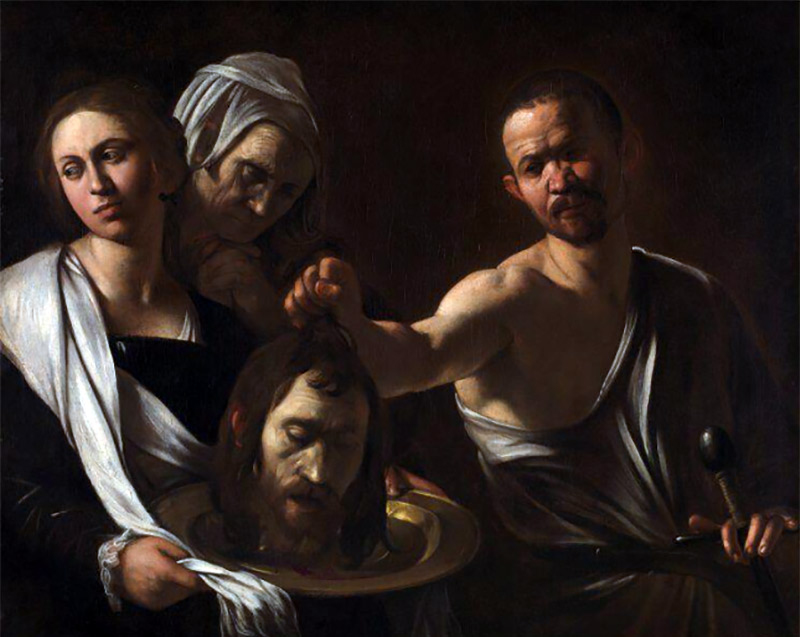
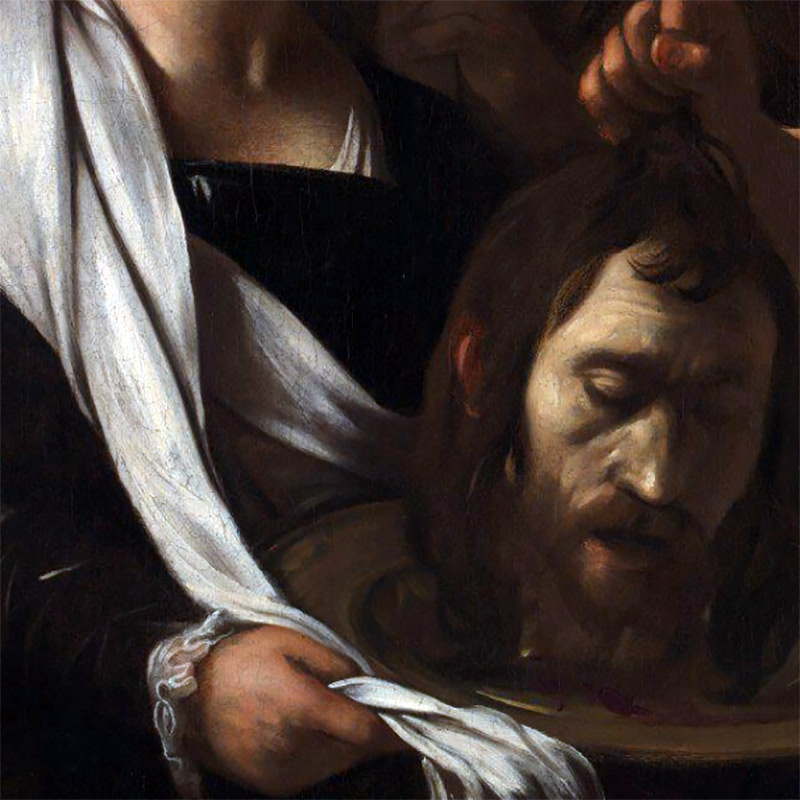
John the Baptist (sometimes called John in the Wilderness) was the subject of at least eight paintings
by the Italian Baroque artist Michelangelo Merisi da Caravaggio (1571–1610)
The term chiaroscuro stems from the Italian words chiaro meaning clear or bright, and scuro meaning obscure or dark. In paintings the description refers to clear tonal contrasts which are often used to suggest the volume and modelling of the subjects depicted. The technique focuses on shadows and a single source of light to achieve photorealistic depth and tone. Mostly used for oil paintings, early Baroque-era artists showcased how striking the method can be, which is why so many artists today continue to implement the chiaroscuro technique, despite how challenging and time-consuming it is to achieve.

'Emperors truth' underwater Vanitas still life photograph dated 2010.
Some of the shading techniques used for effective chiaroscuro include hatching, shading with parallel lines, and layering tones of the same colour. For building up tonal gradations, it is usually most effective to work dark to light. Artists that are most famed for their use of chiaroscuro include Leonardo da Vinci, Caravaggio, Rembrandt, Vermeer, Goya, and Georges de La Tour. Leonardo da Vinci employed it to give a vivid impression of the three-dimensionality of his figures, while Caravaggio used such contrasts for the sake of drama. All these artists were very aware of the emotional impact of these effects, as indeed am I. Creating chiaroscuro with photography 'in camera' has taken me many decades to perfect using a process that literally paints the subject with light that allows these photographic works to take on the semblance of an oil painting more than I could ever have imagined. Using photography in this unique way, for me is an opportunity to capture the beguiling beauty of life’s everyday confinements, re-proposing the ordinary, the displaced and the overlooked that perhaps we all so readily take for granted.
Michelangelo Merisi da Caravaggio led a turbulent life, involving murder charges, ambushes by knights & assassins, and a death that is still shrouded in mystery to this day. He poured his passion into his artwork, producing realistic high renaissance pieces that had an incredible amount of detail. His use of light and dark contrast, or chiaroscuro, was incredibly influential to artists of the day and paved the way for the tenebrism technique. One of his earliest masterpieces, The Cardsharps.
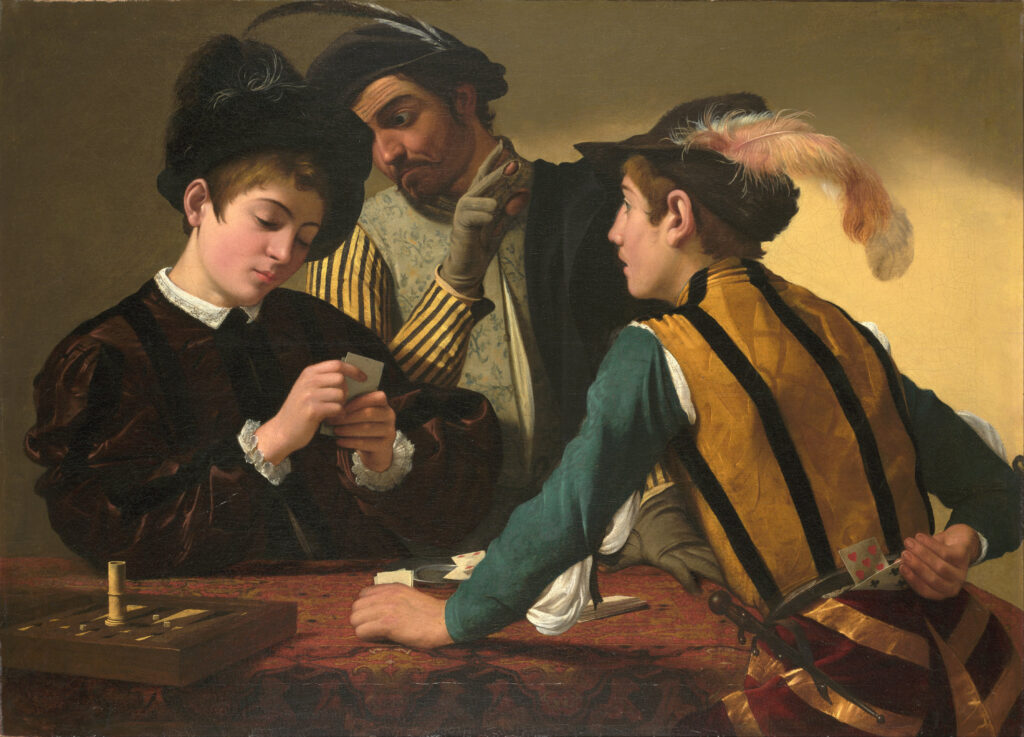
Caravaggio, The Cardsharps dated 1594
The Cardsharps depicts a card game being played between three players: two cardsharps and a mark. They are playing a game of primero an early version of poker. One of the cheats is signalling to his partner, while the second reaches behind his waistband to a extra cards laying in wait, his fingertips exposed make it easier for to feel ‘marked’ cards. It is clear by the mark’s lace collar and ruffled cuffs that he is of a higher class with his muted wardrobe in contrast to the garish stripes of the cardsharps. By obscuring the right eye of the cardsharp on the left, his visible eye takes on a pronounced emphasis; we can see the sinfulness of the scene, and the tension between the two cardsharps. In this artwork, Caravaggio is lamenting a loss of innocence. Although there are only three subjects in the piece, they each hold an important part of the story: the young boy being duped by the older, experienced cardsharp, with the younger cardsharp colluding & corrupted in the scene.
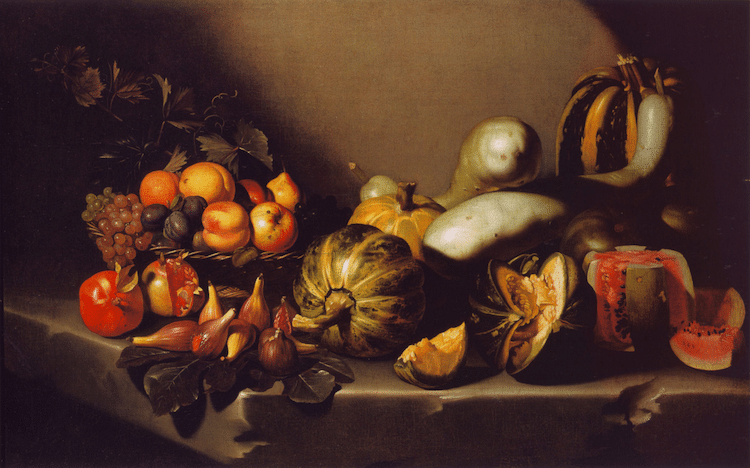
Caravaggio still life with fruit dated 1603
While we know little of Caravaggio’s early life, born Michelangelo Merisi da Caravaggio, on September 29, 1571, in Milan, Italy. When he was five years old, his family moved to the countryside to escape an outbreak of the bubonic plague. By 1577 Caravaggio lost his father, younger brother, paternal grandparents & uncle to the disease. His mother later died in 1584, just after Caravaggio began an apprenticeship with painter Simone Peterzano. Caravaggio in the following years traveled to Venice to view the works of Titian and Giorgione that were a big influence.
Around 1592, Caravaggio fled to Rome following his involvement in a murder and subsequent wounding of a police officer investigating the case. He remained in Rome until 1606, working as an assistant to fresco painter Giuseppe Cesari painting background flowers and fruits, being commended for his attention to detail, something that is clearly evident in later works.
Although Caravaggio had come to Rome with no money, literally with the clothes on his back, scared of his pursuers catching up with him. His work with Cesari had him meet his future patron, Cardinal Francesco Maria del Monte. While he enjoyed success and recognition for paintings such as Amor Vincit Omnia which he completed in 1602.
In 1606 he again killed another young man, his former friend Ranuccio Tomassoni, in a street brawl and was on the run once again. He was exiled from the city and the courts deemed that any citizens in the papal states would receive an award for executing him.
It is believed that Caravaggio was granted entry into Naples by Constanza Colonna Sforza as Caravaggio had ties to the powerful family, even though they were from the lower classes this was an influential alliance to have. While he had become well known for his use of chiaroscuro and radical naturalism, his later pieces showed experimentation with colour, contrast with the use of rapid brushstrokes from a palette that heavily featured red and brown. Through his relationship with the Sforzas, he was commissioned to paint a number of pieces for churches, such as the Madonna of the Rosary and The Seven Works of Mercy.
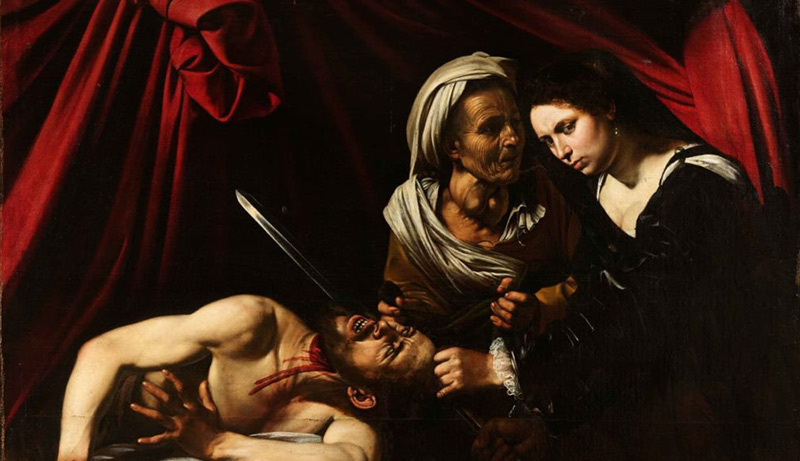
Caravaggio, The Beheading of Saint John the Baptist dated 1608
Caravaggio moved to Malta in 1607, and it was here that his dramatic lifestyle led to his downfall. Although he completed important pieces such as The Beheading of Saint John the Baptist, his largest painting, he was eventually arrested following an altercation at the Conventual Church of Saint John. During the fight a knight was seriously wounded, and Caravaggio was captured and imprisoned by the Knights at Valletta. Incredibly, he managed to escape, but his artistic honours were revoked by the Order of the Knights of Malta, who expelled him as ‘a foul and rotten member’.
After a short time in Sicily, where he continued to experiment with his painting technique, Caravaggio returned to Naples. It is thought that he was being pursued by enemies, so he returned to the place where he had connections with the Colonna Sforza family who would be able to protect him. However, they were unable to prevent an ambush on Caravaggio that left him with a slashed face and near fatal wounds. He recovered at the Colonna’s palace, completing pieces such as Salome with the Head of John the Baptist and David with the Head of Goliath. In 1610, he returned to Rome after hearing that he had secured a pardon from the papal.
It is not clear what happened when he returned to Rome, however, it is believed that he was mistakenly arrested and put in jail. However, he died two days after being released, and to this day his cause of death not known for certain. Some believe that he may have been suffering from malaria, with many historians believing he died from syphilis, while others believe that he may have been attacked again by the same group plotting behind his ambush in Naples.
Caravaggio’s work may have been overshadowed by his explosive personal life, but he was without doubt one of the most important artists of his time, a master of chiaroscuro with strong contrasts between light and dark affecting the entire composition of his paintings. Arts historian Gilles Lambert said that Caravaggio was the father of oscuro putting far deeper shadow detail into chiaroscuro than had ever been seen before. While he did not invent the technique, he used it as a dominant element bathing subjects in beams of light lunging the rest of the piece into dark shadows.
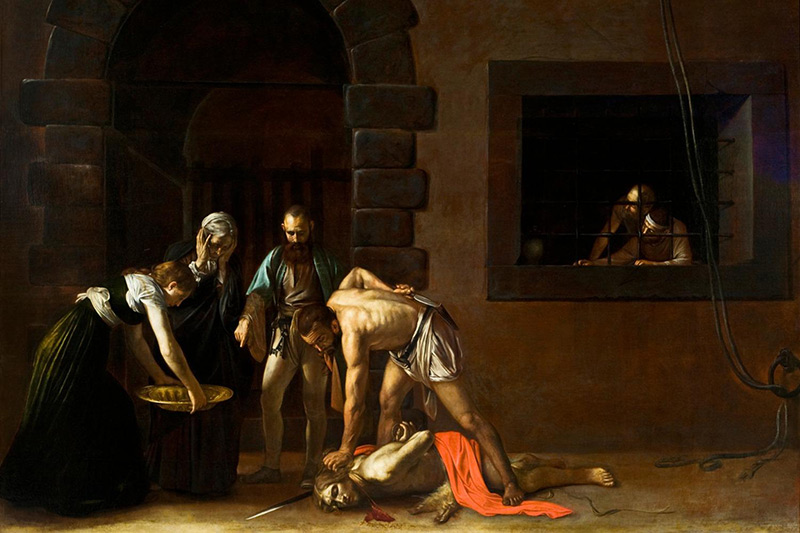
Caravaggio, John the Baptist dated 1603
A fine example of Caravaggio’s chiaroscuro is Saint John the Baptist in the Wilderness. In this work we can see the figure of Saint John the Baptist emerging from a shadowy forest his face and body lit by a single beam of golden light. A common trait with his use of chiaroscuro, we do not see a source of light only the way it shines on the subject.

Caravaggio, Saint John the Baptist in the Wilderness dated 1604
Caravaggio’s development of chiaroscuro paved the way for a technique known as tenebrism. Tenebrism also known for its dramatic illumination building on the high contrast of chiaroscuro. You will have seen this in Baroque paintings where a spotlight illuminates the subject with the rest of the piece in darkness. Sometimes chiaroscuro is mistaken for this more extreme version tenebrism. This technique, which derives from the Italian word tenebroso meaning dark or gloomy, exaggerating the contrast of light and dark to create a heightened sense of drama. It can be distinguished from chiaroscuro for its very dark or even flat black background, which separates the subject from the setting.
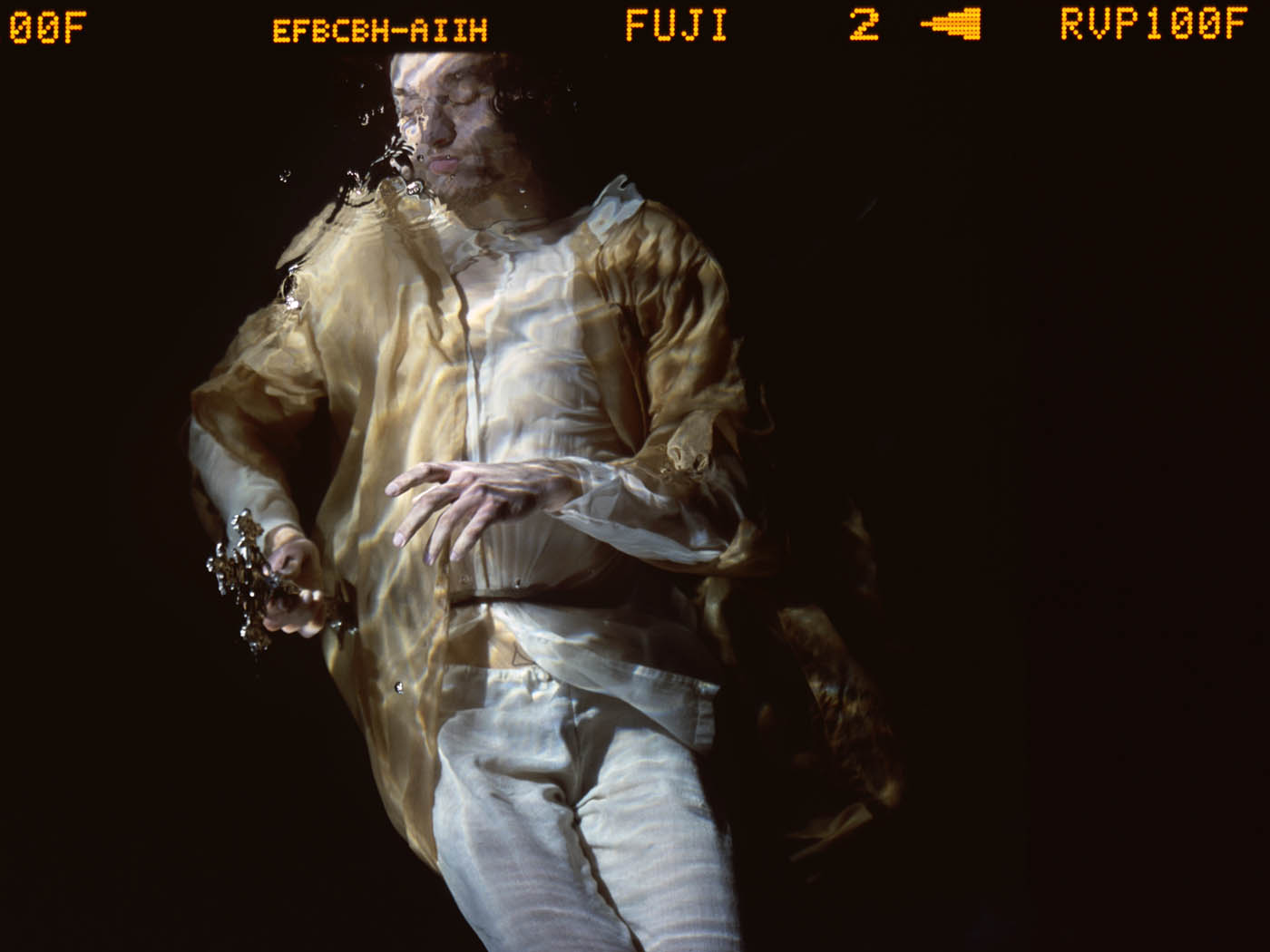
'Heratclitus II' from exhibition 'Rastvoyrennaya Pechal', Triumph Gallery, Moscow dated 2013.
Those readers amongst you that are familiar with my work, will undoubtable see these influences in the studio with me today. Using black as my base is of course symbolic, black with bold colour tend to be my main protagonists. I use black to set the scene with ultimate tones of darkness, for me as much a colour as white or vermilion or lemon yellow or purple, black technically is not a colour, non being if you like, so here is the passionate interest in black and colour, life and death, being and non being. This is particularly difficult in analogue photography which is why I developed the process of working underwater in vast volumes of black water that absorbs any stray light allowing the full dramatic effect of chiaroscuro to be utilised.
In 2014 Professor Andrei Tolstoy, (1956-2016. Prof. of Arts at the Russian Academy of Arts) stated ' Photography aching with the dramatic radiance of Caravaggio, Hamiltons’ figures arise from a well of negative potential, as if from the depths of the fugitive self. ' While in 2017 Paul Carey-Kent curator & critic wrote ' The most impressive technical feat is how clear and light the figures appear to be against blackness, generating a saintly aura. That dramatic and moral use of light is characteristic of Caravaggio.'
I use black, black deep enough to get lost in, aiming to be a genuine exemplar of authentic artistic expression untrained and unsullied by academism, searching for my own powerful and uncorrupted vision.
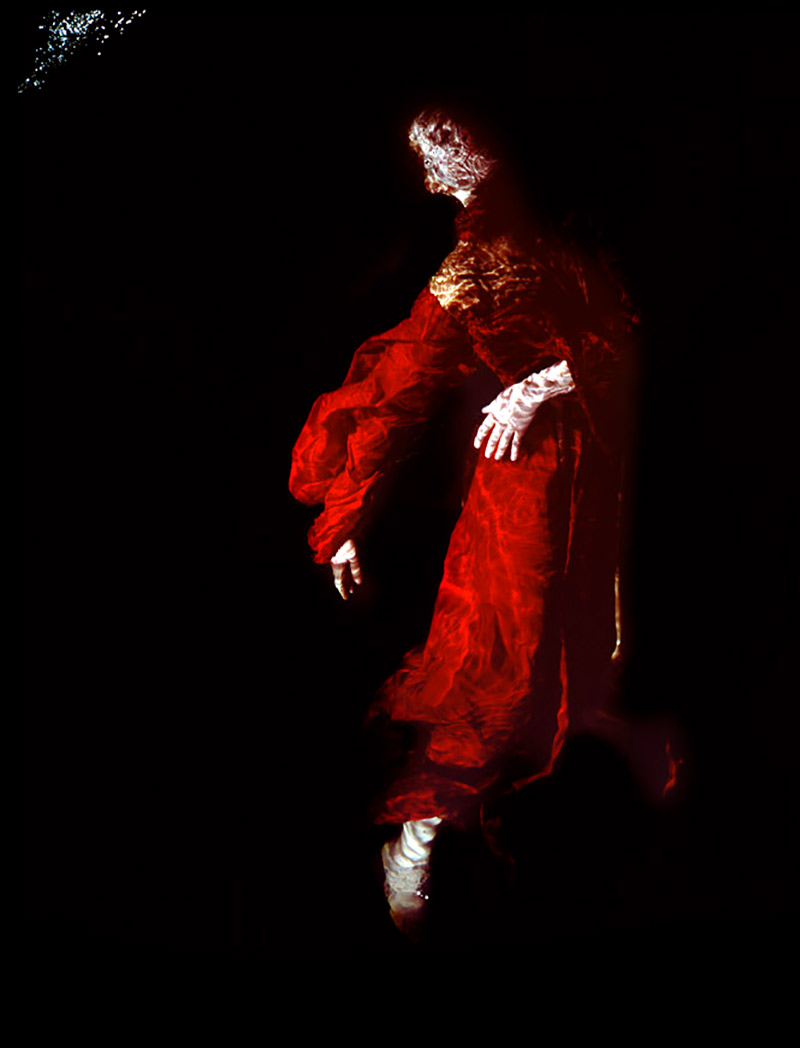
'Wicca in red’ dated 2014, from the series 'Rastvoyrennaya Pechal', Moscow 2014.
Unique Chromogenic Print; 23.6 x 17.7 inches / 60 x 45 cms.
Now working as a late-career artist, I have isolated myself from the world to continue distilling elements out of my images with the strong use of deep blacks; hoping to convey rich layers of meaning in what at first appear deceptively simple images.
Photography seems to have lost its way in our visually over stimulated world. Its force and its failing is its reproducibility. With that in mind I am provoked by the notion that a painting is intrinsically more valuable than a photograph primarily because of its singular uniqueness. To that end, since 2013 I only produce unique prints in an attempt to challenge the ideas concerning the spiritual and economic valuation of artworks and to create an exciting tension between their individual present and relinquished, reproducible past.
I want photography to be important again, it is so dissolved by social media and photoshop that we rarely look into a photograph any more; I want to extend the parameters of what is possible. Most of the photography we are surrounded by these days is usually just looked at, seldom looked into.
Working with analogue camera equipment and without post production, this life long dedication to in-camera purity establishes it's provenance when linked to painstaking preparatory work.
I hope you found this article informative. Now that you are here, lets stay connected...
Join the mailing list.. Register
Telegram Channel.. DistilEnnui
Instagram.. AJHamilton.Artist
Twitter.. DistilEnnui